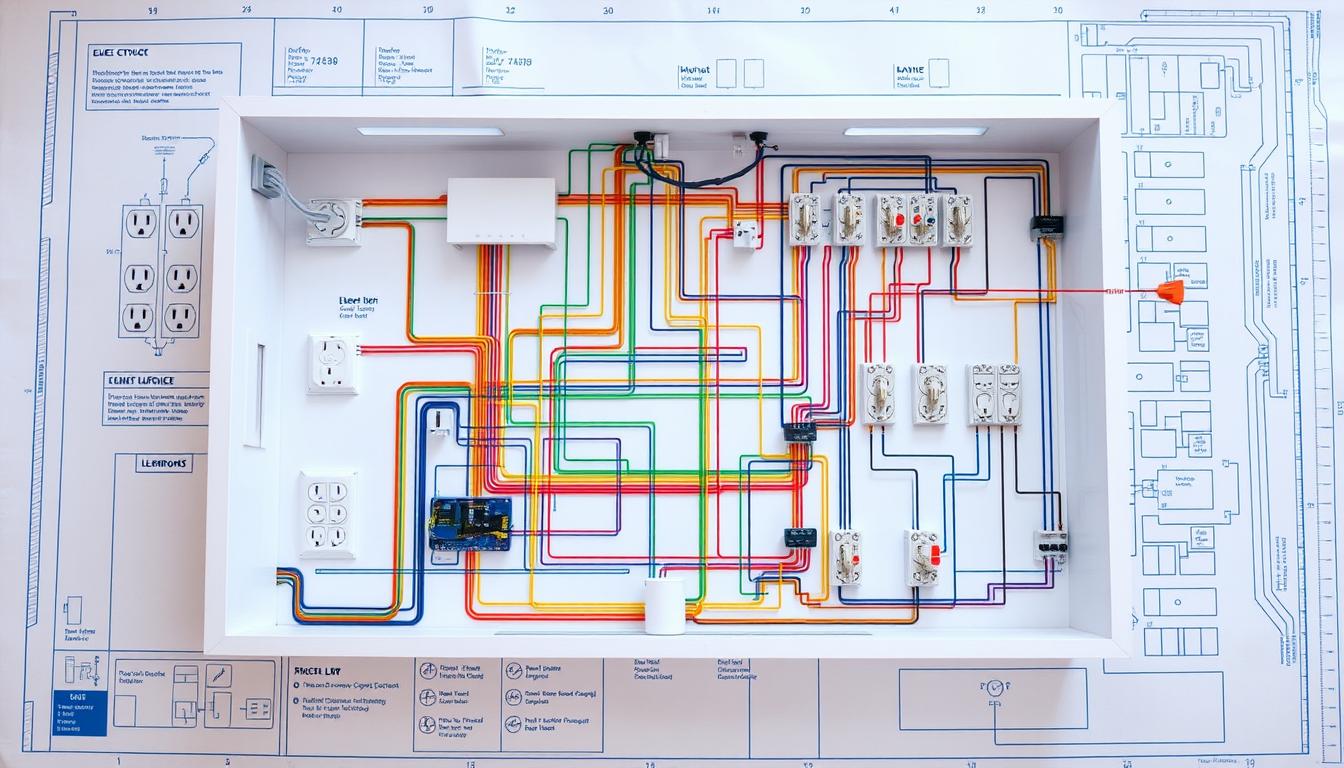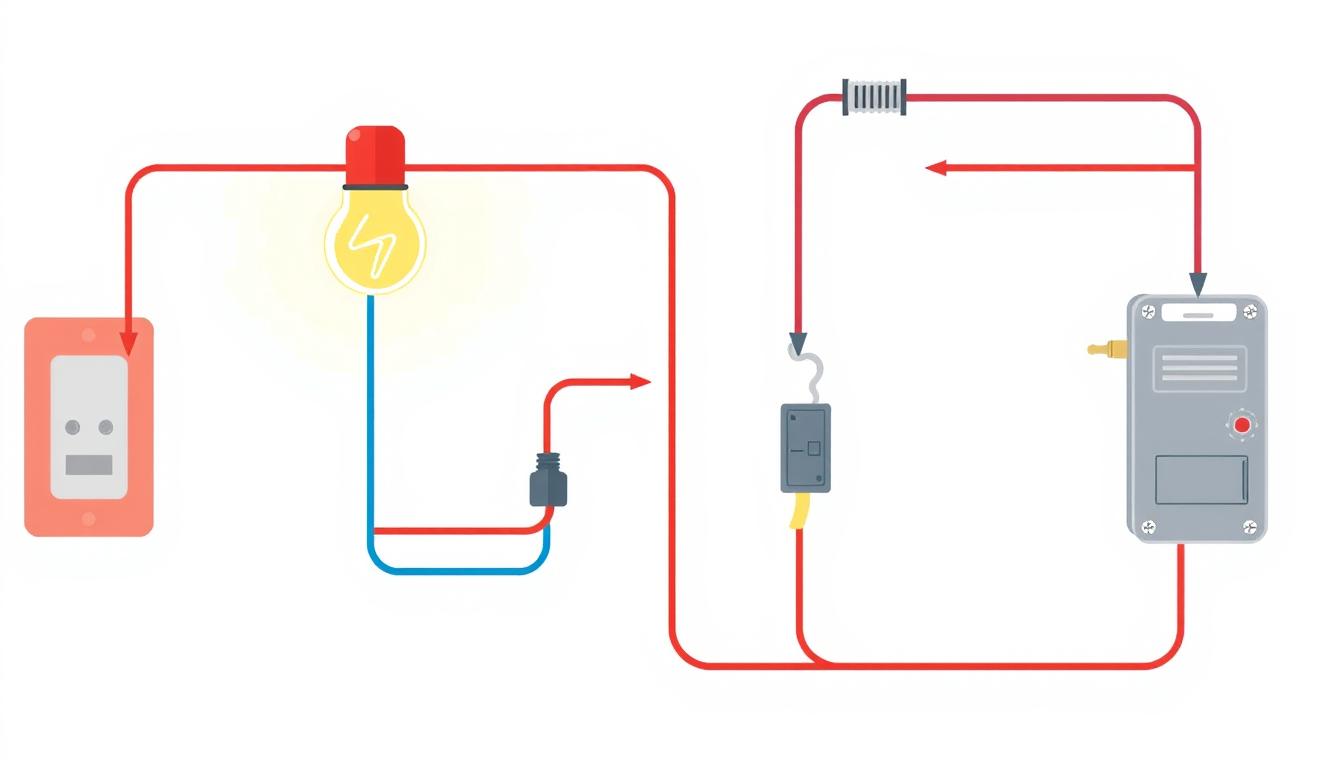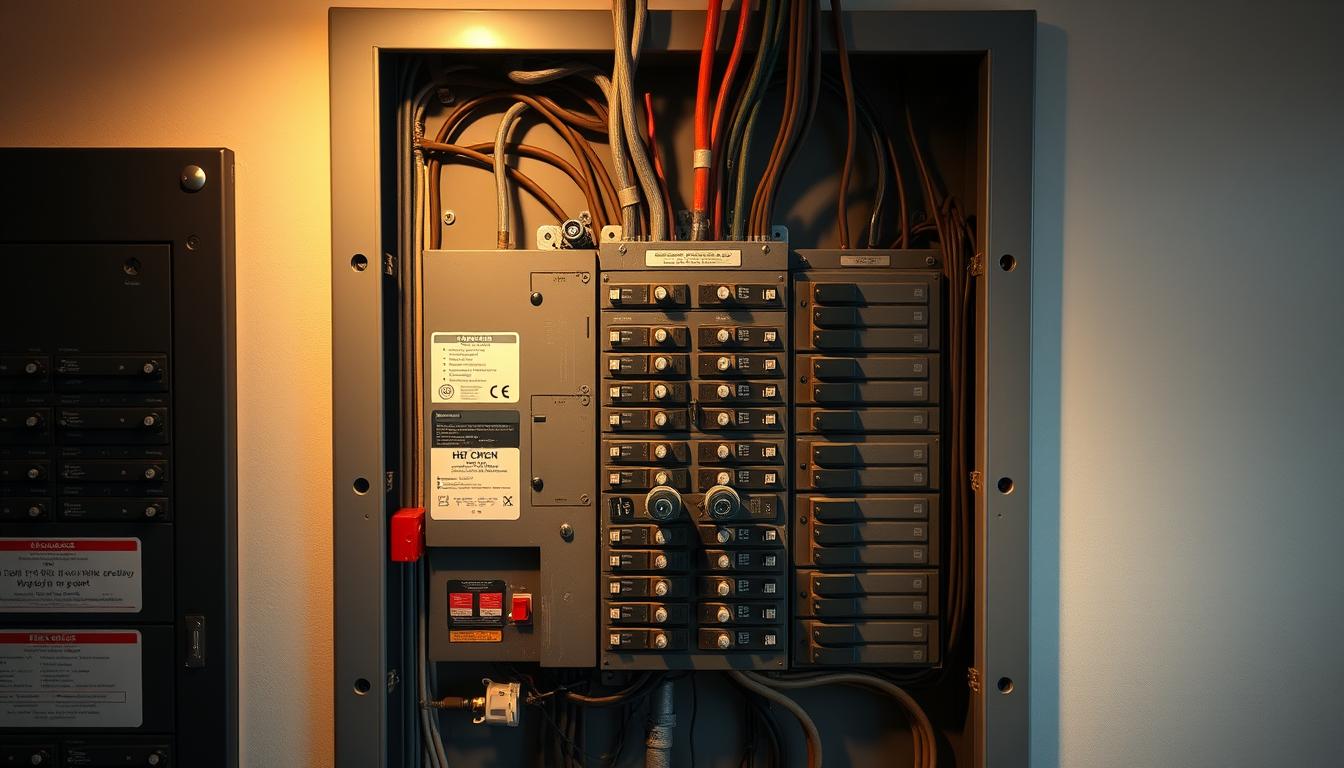Having a well-organized electrical system is key for safety and saving money. It helps spot issues early, making circuit tracking and electrical mapping easier. This guide will show you how to map your home’s electrical circuits. You’ll learn how to make your electrical system safe and efficient.
This guide will teach you why circuit tracking and electrical mapping are important. You’ll learn to identify circuit paths and verify connections. You’ll also learn how to label your electrical panel and rooms effectively. This will help you keep your home’s electrical system safe and efficient.
Key Takeaways
- Importance of circuit tracking and electrical mapping for safety and efficiency
- Benefits of having a well-organized electrical system
- Tools and materials needed for circuit tracking and electrical mapping
- Step-by-step process for mapping your home’s electrical circuits
- Tips for creating an effective labeling system
- Regular maintenance and updates for your electrical system
Understanding the Importance of Circuit Mapping
Circuit mapping is key to keeping your home’s electrical system safe and efficient. It helps you spot potential dangers and fix them before they become big problems. Breaker identification and outlet mapping are vital. They let you find where specific outlets and switches are on your circuit map.
Electrical accidents are a top cause of home fires and injuries. But, with a good circuit map, you can lower these risks a lot. For example, in an emergency, a clear map helps you find and fix the issue fast.
Here are some main benefits of circuit mapping:
- Improved safety: It helps you find and fix hazards, making your home safer for everyone.
- Increased efficiency: A detailed circuit map shows where energy is wasted. This lets you use less and save money.
- Cost savings: By avoiding electrical accidents and using energy wisely, you can cut down on bills and avoid expensive fixes.
So, circuit mapping is essential for a safe and efficient home electrical system. By making a detailed map, you get many benefits. These include better safety and saving money.
Essential Tools and Materials for Circuit Tracking
To track and map your home’s electrical circuits, you need the right tools and materials. This includes various equipment for identifying and organizing power distribution. It’s important to understand how power distribution affects your electrical system.
Some key tools for circuit tracking are:
- Non-contact voltage testers for safe detection of live wires
- Digital multimeters for measuring voltage, current, and resistance
- Circuit testers for identifying specific circuits and their paths
- Label makers for organizing and labeling circuits, outlets, and switches
For materials, you’ll need labels, markers, and a notebook for circuit maps. The aim is to create a clear map of your home’s power distribution. This makes managing and maintaining your electrical system easier.
By using these tools and materials, you’ll make an accurate and useful circuit map. This is key for efficient power distribution and electrical safety in your home.
Safety Precautions Before You Begin
When you start circuit mapping, safety is key. Before diving in, make sure to take steps to avoid accidents. Circuit labeling is crucial to keep different circuits straight.
First, wear protective gear like gloves and safety glasses. This protects you from electrical shocks and other dangers. It’s also important to know how to quickly shut off power and leave the area if needed.
Personal Protection Equipment
- Gloves to prevent electrical shocks
- Safety glasses to protect your eyes
- A fire extinguisher nearby
Emergency Shutdown Procedures
In an emergency, knowing how to shut off power fast is vital. Find the main circuit breaker and learn how to use it. Clear circuit labeling helps you find the right breaker and avoid accidents.
When to Call a Professional
If you’re not sure about circuit mapping or feel uneasy, call a pro. They offer expert advice and ensure the job is done right and safely.
By following these safety steps and understanding circuit labeling, you can have a safe and successful circuit mapping experience.
Basic Principles of Home Circuit Mapping
Knowing your home’s electrical system is key for safety and efficiency. Electrical documentation is crucial in understanding the complex circuit and wire network. It helps spot issues, fix them, and plan for upgrades. A detailed electrical system ensures everything is connected right and works well.
Creating a detailed record of your home’s electrical system is important. This includes electrical documentation like diagrams, charts, and notes on circuit paths and outlets. Keeping records up-to-date helps find specific circuits, spot dangers, and make smart choices for upgrades or repairs.
- Improved safety by reducing the risk of electrical shocks or fires
- Increased efficiency by streamlining repairs and upgrades
- Enhanced organization and planning for future electrical projects
By focusing on electrical documentation, homeowners start building a safe, efficient, and organized electrical system. This foundation is a valuable resource for years, giving peace of mind and protecting the home’s electrical system.
Step-by-Step Circuit Identification Process
To find circuits in your home, follow a simple process. It involves circuit tracking and outlet mapping. You’ll need to test outlets, map circuit paths, and check connections.
Start by testing each outlet to see which circuit it’s on. Use a multimeter or circuit tester for this. After finding the circuit for each outlet, write down the paths and any shared connections.
Testing Individual Outlets
This step is key in circuit tracking. It shows how your home’s electrical system is set up. Testing each outlet lets you map your home’s circuits and spot any problems.
Recording Circuit Paths
As you test each outlet, write down the circuit path and any shared connections. This makes a detailed map of your home’s electrical system. It also helps find issues later on.
Verifying Connections
Lastly, check the connections between outlets and circuits to make sure your map is right. This step is vital in outlet mapping. It helps find and fix any issues.
By following these steps, you can make a detailed map of your home’s electrical system. This ensures your circuit tracking and outlet mapping are done well.
Creating an Effective Labeling System
When mapping circuits, a good labeling system is key for safety and efficiency. Breaker identification and circuit labeling are vital. They help you quickly find which breaker controls which circuit. This makes troubleshooting easier and helps prevent accidents.
A solid labeling system begins with the breaker panel. This is your electrical system’s center. It’s crucial to label each breaker clearly. Use labels, stickers, or a whiteboard to make each breaker easy to spot.
Breaker Panel Organization
Organizing your breaker panel is essential. Group similar circuits together, like all lights in one room. Label each breaker clearly. Use colors to tell different circuit types apart, like red for high-voltage and blue for low-voltage.
Room-by-Room Documentation
It’s also key to document which circuits control outlets and fixtures in each room. Use a room-by-room guide to list each circuit and its breaker. This guide is vital in emergencies, helping you quickly find the right breaker to switch off.
By following these tips, you can set up a labeling system that’s easy to use. Whether you’re a homeowner or an electrician, breaker identification and circuit labeling are crucial. A well-organized system keeps your electrical system safe, efficient, and easy to manage.
Troubleshooting Common Circuit Mapping Challenges
When dealing with electrical mapping, several challenges can pop up, mainly with power distribution. One big issue is having outdated or wrong circuit maps. This can cause confusion and even safety risks. It’s crucial to keep your circuit maps up to date and correct.
Understanding how electricity moves in your home is key to power distribution. By making a detailed electrical mapping of your circuits, you can spot problems early. Some common problems include:
- Incorrectly labeled circuits
- Outdated or missing circuit maps
- Insufficient power distribution planning
To fix these issues, try these tips:
- Check circuit labels and update them when needed
- Make a detailed electrical mapping of your home’s circuits
- Get help from a professional electrician if you’re not sure about power distribution
By following these steps and keeping your electrical mapping records accurate, you can make sure your home’s power distribution system is safe and works well. Always put safety first and get help from a pro if you’re not sure about anything.
Maintaining Your Circuit Map Over Time
To keep your circuit map useful for a long time, regular maintenance and updates are key. This means adding electrical documentation to your routine. It helps you track any changes to your home’s electrical system. Good circuit tracking is important for this, as it lets you see and record circuit paths easily.
It’s important to update your circuit map regularly. Set aside time to check and update it after any electrical work or home changes. Here are some tips to help you:
- Update your map after any electrical work or renovations
- Use electrical documentation to keep track of changes and modifications
- Implement a regular review and update schedule
By following these tips and focusing on circuit tracking and electrical documentation, your circuit map will stay a valuable tool. It will help you keep your home’s electrical system in good shape.
| Update Schedule | Task |
|---|---|
| Monthly | Review circuit map for accuracy |
| Quarterly | Update map to reflect any changes or modifications |
| Annually | Perform a thorough review and update of the circuit map |
Conclusion: Maximizing Your Home’s Electrical Safety and Efficiency
By following the steps in this guide, homeowners can map their electrical circuits well. Circuit mapping boosts safety, saves money, and prepares for emergencies.
Using a circuit mapping process helps spot dangers, use energy better, and make electrical work easier. With the right tools and safety steps, anyone can manage their home’s electrical setup. This brings peace of mind from a well-kept system.
Mapping your home’s circuits now will protect your family and property. It also makes your electrical system more efficient and useful. Start using circuit mapping to get the most out of your home’s electrical setup.




